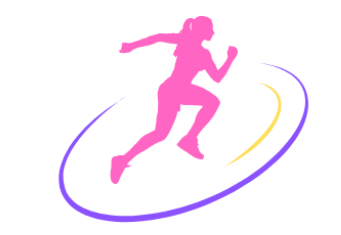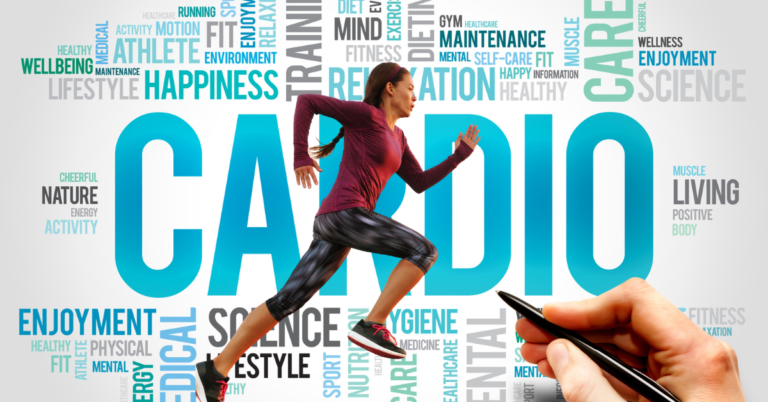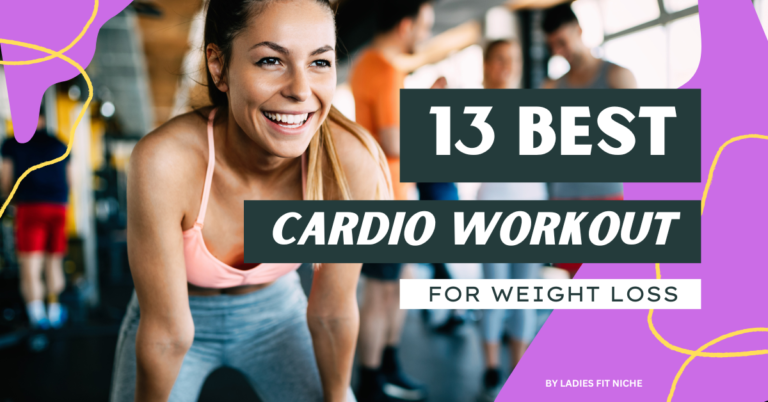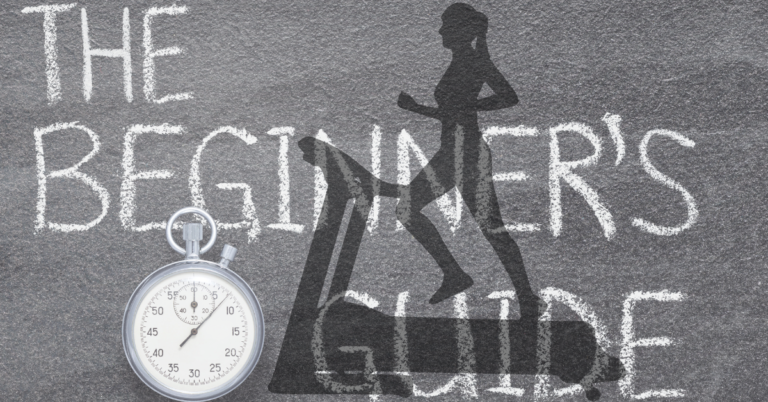Beginner HIIT Bodyweight Workouts for Women (Equipment Free)

Welcome, ladies! Prepare to embark on the ultimate guide to beginner HIIT bodyweight workouts designed exclusively for women. In this empowering journey, we will delve into the invigorating world of high-intensity interval training with your own body weight. The best part? You don’t need any equipment. Your determination and enthusiasm are the only tools you’ll need.
According to the American College of Sports Medicine (aka ACSM) “The popularity of high-intensity interval training is on the rise.” HIIT training is a popular and effective fitness approach known for its efficiency in delivering impressive results, whether you’re aiming to improve cardiovascular health, increase strength, or achieve weight loss goals.
This guide will walk you through what is HIIT, the benefits of HIIT workouts, and a sample beginner workout circuits to get you started. We’ll dive into the basics of HIIT training and how you can design effective workouts tailored to your needs. Plus, we’ll share expert tips on maximizing results while preventing injuries.
Key Takeaways
– HIIT workouts combine intense exercise with brief recovery periods for maximum benefits.
– HIIT is time-efficient and can be done in as little as 20 minutes.
– Different types of HIIT workouts include Tabata, AMRAP, and EMOM.
– Modify the intensity of HIIT workouts to match your fitness level.
What is HIIT?
HIIT, also known as high intensity interval training, is a cardio and strength training workout method that combines short bursts of intense exercise with brief recovery periods. This type of workout is perfect for beginners who want to get fit fast.
HIIT workouts are designed to maximize your cardio and burn fat efficiently. They are great for those looking to improve their cardiovascular fitness and lose weight. The benefits of HIIT workouts include increased metabolism, improved endurance, and reduced risk of heart disease.
By incorporating HIIT into your fitness routine, you can achieve maximum results in a shorter amount of time compared to traditional steady-state cardio exercises. So if you’re a beginner looking for an effective way to get fit and improve your overall health, give HIIT workouts a try!
Benefits of HIIT Workouts for Women
Ladies, listen up! If you’re looking to level up your workout routine, incorporating HIIT is a game-changer. Here’s why you should consider adding HIIT to your fitness regimen:
- Fat loss
- Elevate endurance Capacity
- Improves Cardiovascular Health
- Boosts metabolism
- Enhances strength and muscle tone
- Reduce insulin resistance
- Improve mental focus and mood
Another great benefit is that these high-intensity workouts can be done from the convenience and comfort of your own home
HIIT Basics
Alright, time to cover the essentials of HIIT so you have a solid foundation before jumping into the workouts! In a HIIT workout, you’ll alternate between intervals of high intensity and rest, pushing your body to the limit and allowing for recovery. There are different types of HIIT workouts, such as Tabata, AMRAP, and EMOM, each with its own unique structure and benefits. You can modify the intensity of your HIIT workout to match your fitness level, making it accessible for beginners and challenging for advanced athletes.
Structure of a HIIT Workout – intervals of high intensity and rest
The foundation of any HIIT workout is intervals of high-intensity exercise alternated with intervals of rest or lower intensity. This structure is what gives HIIT its fat-burning, endurance-building benefits.
There are a few key components that make up a HIIT interval:
– Work interval: This is when you are performing exercises at close to your maximum level of intensity. The work interval can range from 10 seconds to 4 minutes depending on the protocol. As a beginner, start with shorter 10-30 second work intervals.
– Rest interval: The rest interval comes after the work interval and allows you to recover before the next intense effort. Rest intervals are typically equal to or 2x as long as the work interval. For example, 30 seconds work, 60 seconds rest.
– Number of repetitions: A HIIT session usually consists of multiple sets of work/rest intervals, referred to as repetitions. For beginners, start with 4-8 repetitions.
– Type of exercise: Any exercise can be done in a HIIT format – sprints, bike, rower, jump rope, weights, calisthenics, etc. Choose 1-2 exercises to focus on for each HIIT session.
The magic of HIIT comes from pushing yourself close to max effort during the work intervals, then recovering fully during the rest intervals. This allows you to work harder than you could at a steady pace for a prolonged time. Starting with shorter intervals as a beginner will help you get accustomed to the demands of HIIT safely.
To get fit fast, you’ll be alternating between periods of intense effort and rest during your HIIT workout. But how long should each interval be?
The duration of high-intensity interval training (HIIT) times can vary depending on your fitness level and goals. For beginners, a good starting point is to work at a high intensity for 20-30 seconds followed by a rest period of 10-20 seconds.
As you progress, you can increase the length of your intervals up to 60 seconds or even longer. It’s important to listen to your body and gradually challenge yourself as you become more comfortable with the workouts.
Remember, the key is to push yourself during the intense intervals and use the rest periods to recover before giving it your all again.
Types of HIIT workouts – Tabata, AMRAP, EMOM
Now about let’s talk types of HIIT workouts. There are a few common HIIT protocols:
– TABATA: is a popular type of HIIT workout that consists of alternating between 20 seconds of intense exercise and 10 seconds of rest for a total of four minutes. This format is great for beginners because it allows for short bursts of effort followed by brief recovery periods. This is a favorite for its quick 4-minute timeframe.
– AMRAP: stands for “As Many Rounds As Possible” in a set time frame, like 30 seconds work, 30 seconds rest AMRAP for 10 minutes total. A great beginner option as it helps build endurance and strength
– EMOM: “Every Minute on the Minute”, perform an exercise for a certain number of reps or time. Like 10 squats EMOM for 10 minutes. Allows you to work at your own pace. This type of HIIT workout is great for beginners looking to improve their speed and efficiency.
By incorporating these different types of HIIT workouts into your routine, you can maximize your results and keep your workouts exciting.
Modifying intensity to your fitness level
As a beginner, start with shorter intervals and gradually increase the duration as you get stronger. Aim for 10-20 seconds of high-intensity exercise followed by 30 – 40 seconds of rest or low-intensity activity.
As you progress, you can increase the intensity by decreasing rest periods or increasing the duration of high-intensity intervals. Remember, it’s all about finding the right balance between pushing yourself and allowing enough recovery time.
Benefits of Modifying Intensity:
- Increased Confidence: Gradually building up intensity will boost your confidence in your abilities.
- More Sustainable Approach: Adjusting intensity allows for a more sustainable approach to HIIT workouts
- Reduced Risk of Injury: Modifying intensity decreases the risk of overexertion or strain on joints and muscles.
- Maximize your results and prevent injuries during HIIT training.
Remember, everyone’s fitness journey is unique, so take your time and find what works best for you!
Designing Your HIIT Workouts
When designing your HIIT workouts, you need to consider a few key points.
First, choose intervals and work/rest durations that challenge you but are still manageable.
Next, select exercises that will give you maximal results based on your fitness goals. You can either use equipment for added resistance or go equipment-free depending on what’s available to you.
Finally, try incorporating sample beginner HIIT workout circuits into your routine to get started on the right track towards improving your fitness level quickly and effectively.
Choosing Intervals and Work/Rest Durations
– Work intervals: 10-30 sec to start, then build up to 1-4 mins
– Rest intervals: Equal to or 2x as long as work intervals. For example; Equal rest Interval = workout for 30 seconds and rest for 30 seconds. 2x rest interval = workout for 30 secs and rest for 60 seconds
– Start with a shorter work-to-rest ratio and progress as you get fitter
To help beginners, we have prepared a carefully curated list of selected exercises to help you kickstart your fitness journey:
Selected Beginners HIIT Bodyweight workouts
Get ready to feel the burn with these bodyweight strength training exercises
Bodyweight exercises are perfect for beginners who want to get started with HIIT workouts. These exercises use your own body weight as resistance, so you don’t need any equipment.
Here is a list of bodyweight exercises that are excellent for incorporating into your HIIT workouts:
1. Burpees: A full-body HIIT workout that combines a squat, push-up, and jump. Start in a standing position, squat down, place your hands on the floor, kick your feet back into a push-up position, perform a push-up, bring your feet back to the squat position, and explosively jump up. (credit: Cultfitoficial)
2. High Knees: Stand in place and rapidly drive your knees up towards your chest, alternating between legs. Maintain a quick and controlled pace, engaging your core and arms. (credit: Cultfitoficial)
3. Mountain Climbers: Begin in a push-up position, then quickly alternate bringing one knee at a time towards your chest, mimicking a running motion. Keep your core engaged and your back straight. (Credit: Paleohacks)
4. Jump Squats: Start with your feet shoulder-width apart, lower into a squat position, then explosively jump up, reaching for the ceiling. Land softly back into the squat position and repeat. (credit: Well+Good)
5. Plank Jacks: Begin in a plank position with your forearms on the ground, shoulder-width apart. Jump your legs out wide, then jump them back together, maintaining a strong plank position throughout. (credit: Well+Good)
6. Jump Lunges: Begin in a lunge position with one foot forward and the other foot extended behind you. Jump explosively, switching the position of your legs mid-air, and land in a lunge with the opposite leg forward. (credit: Howcast)
7. Side-to-Side Skaters: Start with your feet hip-width apart. Jump laterally to the right, landing on your right foot, and bring your left foot behind your right ankle. Push off with your right foot and jump to the left, landing on your left foot and bringing your right foot behind your left ankle. Repeat the lateral jumping motion. (credit: Howcast)
8. Plank to Push-Up: Start in a high plank position, then lower yourself down to a low plank position one arm at a time. Push back up to the high plank position one arm at a time. Alternate between low and high plank positions. (credit: Howcast)
9. Side Lunges: Stand with your feet hip-width apart, take a step to the side with your right foot, and lower into a lunge position. Push off with your right foot and return to the starting position. Repeat on the left side, alternating between sides. (credit: FitazFK)
Start with 30-60 seconds of work followed by a short rest period. Repeat 2-5 times for a complete HIIT circuit.
These bodyweight exercises can be combined in various ways to create an effective and challenging HIIT workout. Remember to modify the intensity and duration based on your fitness level, and always prioritize proper form and technique to prevent injury.
*Keep in mind that many bodyweight exercises such as burpees, and mountain climbers, are also a great option for Cardio Workouts, therefore they fall under the category of Cardiovascular exercises too.
Sample Beginner HIIT Workout Circuits
Try out these sample HIIT workout circuit training designed specifically for beginners, and you’ll be sweating buckets and pushing your limits in no time. These bodyweight HIIT workouts are perfect if you’re short on time or don’t have any equipment.
Each circuit consists of four exercises that target different muscle groups and get your heart rate up. Here’s a breakdown of the circuits:
1. Circuit 1:
– Squats: 30 seconds
– Push-ups: 30 seconds
– Mountain climbers: 30 seconds
– Jumping jacks: 30 seconds
2. Circuit 2:
– Lunges: 30 seconds for each leg
– Plank hold: 30 seconds
– High knees: 30 seconds
– Burpees: 30 seconds
These beginner HIIT workout circuits are a great way to build endurance, burn calories, and improve overall fitness. Start with one circuit and gradually increase the number as you get stronger. Remember to warm up before starting and cool down afterward to prevent injury. Get ready to crush those fitness goals!
Maximizing Results and Preventing Injury
To maximize your results and prevent injury during HIIT workout time, it’s essential to focus on proper form and technique. This means maintaining the correct posture and alignment while performing each exercise.
Proper form and technique
Mastering proper form and technique is essential for maximizing the benefits of HIIT workouts and avoiding potential injuries. When performing the best HIIT exercises, such as HIIT cardio or high-intensity interval training, it’s crucial to maintain proper alignment and engage the correct muscles.
Focus on executing each movement with precision, ensuring that your form remains consistent throughout the workout. Bodyweight exercises, like squats and push-ups, should be performed with control and full range of motion.
Warming up and cooling down
Warming up before your workout is crucial as it prepares your body for the intense exercises ahead. It increases blood flow to your muscles, loosens your joints, and raises your heart rate gradually. A dynamic warm-up, consisting of exercises like jogging in place, jumping jacks, or lunges, is ideal to get your body ready for action.
On the other hand, cooling down after a HIIT session allows your heart rate and breathing to return to normal gradually. It also helps prevent muscle soreness and reduces the risk of injury. Take a few minutes for static stretching or gentle movements like walking or yoga poses during the cool-down phase.
By incorporating proper warm-ups and cool-downs into your beginner’s guide to HIIT workouts, you’ll be on track to get fit fast while keeping yourself safe from injuries.
Listening to your body – know when to push and when to pull back
Listening to your body is crucial for avoiding injury and achieving optimal results. Pay attention to any pain or discomfort during your workouts, as this can be a sign that you need to take it easy or modify the exercise. On the other hand, if you feel like you have more energy and are able to maintain good form, it may be time to push yourself a bit harder.
Remember, everyone’s body is different, so what works for someone else may not work for you. Take the time to understand your own limits and adjust accordingly.
To help you gauge how hard you’re working during HIIT workouts, here is a simple table you can refer to:
|
Level |
Description |
Example |
|
Easy |
Able to carry on a conversation effortlessly |
Brisk Walking |
|
Moderate |
Can still talk but with some effort |
Jogging |
|
Hard |
Difficult to speak more than a few words at a time |
Sprinting |
By listening attentively and responding appropriately, you’ll make the most of your HIIT workouts per week while keeping yourself safe from overexertion.
Safety tips – Hydration, recovery, etc.
Hydration is key during intense workouts like HIIT, as it helps regulate body temperature and prevents dehydration. Make sure to drink water before, during, and after your workout to maintain optimal performance.
Recovery is equally important in preventing injuries and maximizing results. Allocate time for rest days between HIIT sessions to allow your body to recover and repair itself. Additionally, focus on getting enough sleep each night to support muscle growth and overall well-being.
Incorporating stretching exercises into your routine can also aid in recovery by improving flexibility and reducing muscle soreness.
By following these safety tips for hydration and recovery, you’ll be able to get the most out of your beginner’s guide to HIIT workouts while keeping yourself safe from harm.
Proper clothing and footwear for HIIT workouts
If you want to maximize your performance and prevent any injuries, make sure you’re wearing the right clothing and footwear for your HIIT workouts. High-intensity interval training time requires attire that allows for easy movement while providing support. Opt for moisture-wicking fabrics to keep sweat at bay and avoid discomfort.
When it comes to footwear, opt for cross-training or running shoes that provide traction and support during lateral movements. Interval time calls for lightweight clothing that won’t weigh you down or hinder your agility. Choose shoes with a low-profile role to enhance speed and responsiveness.
Hiring a Certified Personal Trainer
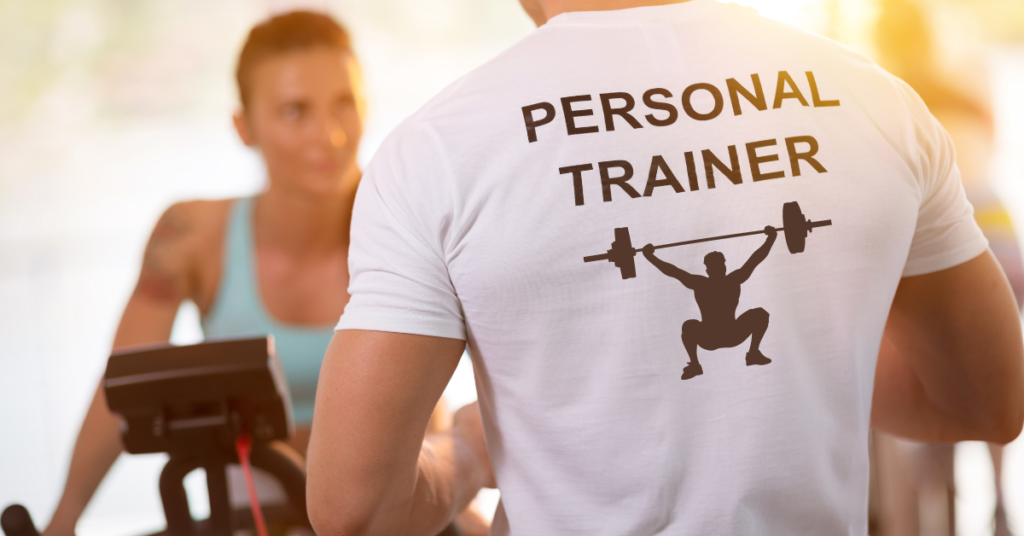
Starting a HIIT workout may seem intimidating for beginners therefore, If you are feeling unsure or concerned about performing HIIT workouts properly and safely, hiring a certified personal trainer can be a wise choice.
A personal trainer has the knowledge and expertise to design effective training sessions, especially when you are new to HIIT. They will customize the best HIIT workouts to your fitness level, provide proper guidance, and help you maintain correct form throughout the exercises. With their professional training style and personalized attention, you can have peace of mind knowing that you are in good hands while maximizing the benefits of your HIIT journey.
Get out there and start sweating – you’ve got this!
